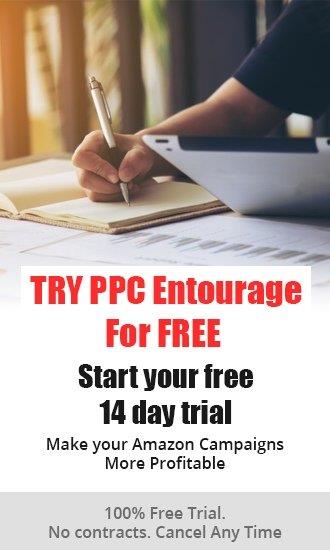Keywords are vital for the success of every Amazon seller.
With them, sellers have the ability to compile a comprehensive list for each of their products. This maximizes the number of search queries that trigger their product listings, making their inventory visible to more relevant, high-value prospects.
Selecting keywords, however, is more than just driving traffic to a product listing with specific terms. Smart keyword research can also provide sellers with a keen understanding of online shopping behavior/trends, intelligence about their competitors, and be a source for ideas for content marketing.
And the best part…
This process doesn’t have to be complicated or time consuming with the right keyword research strategy, and the right keyword tool.
In this blog, you will discover a simple, yet effective way to find the right keywords to build a strong foundation for your listings and ads.
Amazon Keyword Research Tool
NOTE: We’ll be using the ZonGuru keyword research tool for the purposes of this blog, but you can use the keyword research tool of your choice.
How to Do Amazon Keyword Research
- Step 1: Determine your top seed keywords – the most relevant ones.
- Step 2: Using the research tool of your choice, determine who your top competitors are and grab their ASINS. Select competitors with high reviews. (We’re using ZonGuru)
- Step 3: Run a keywords on fire analysis or use Cerebro reverse ASIN analysis. (Using ZonGuru, we obtained 300 competitor keywords.) Competitor keywords can provide valuable intelligence by offering a look at how your competitors placed into the top of the SERP. Substitute and complementary terms may also appear in your competitors’ keywords.
- Step 4: Filter results (ZG = Search Volume >300, Top 25 > 5). The goal is to now identify the top 25 most relevant keywords – those with the most search volume.
- Step 5: (ZG) – Eliminate other columns. Keep keywords, search volume, Top 25, (ZG launch and competitor ranks). The goal is to simplify the process of finding the very best keywords, and where your best opportunities lay.
- Step 6: Download the CSV file and open it. Copy and paste into keyword planner on the Highly Targeted Keywords tab. Click on the following link, to open your copy of the Keyword Research Cheat Sheet: https://get.ppcentourage.com/keywords
The PPC Keyword Target Research Cheat Sheet will help you to organize and compare where your best opportunities are for getting the most from your Amazon advertising.
- Step 7: Determine your average CPC (for Top of search) and Click to Order ratio for your product. If you don’t know what they are, use best estimates or Entourage community data ($1.5 per click, 7 click/order ratio).
- Step 8: Go to Brand Analytics and type in your two seed keywords. Download the search terms that Amazon gives. Copy & paste those search terms into the ongoing keyword research tab, column D.
- Step 9: Evaluate what are your best current opportunities. Use the ZonGuru score, inventory levels, competition etc., to determine which keywords to target. You may wish to consider targeting all.
Sellers may want to have a mixture of major keywords that describe a product, more specific keywords, and niche keywords.
Major keywords (e.g. cat litter box) can be very competitive when bidding for but they will generate the most traffic. The more specific keywords (e.g. large cat litter box) will generate less traffic but typically have higher click-through rates, as the traffic is more focused. The niche terms (designer cat litter box), will drive only a small amount of traffic but will have very little competition, making it easier to rank high for those terms and get top exposure.
Usually, larger brands will focus their efforts on ranking high for major keywords, while smaller brands that have a smaller market share have better results by focusing their attention on more specific keywords, where the competition is less aggressive.
Pro Tip: Once you have a solid list of keywords to target, you should include them in the product content that is indexed by Amazon’s search engine. This content includes the title, bullet points, product description, and back-end keywords. When including keywords, make sure that you are not keyword-stuffing and that the content is compelling to online shoppers. If the content is not compelling, shoppers won’t click and purchase, negatively impacting click-through and conversion rates.
- Step 10: download the playbook series to best determine how to advertise with these keywords. Entourage Playbook Series: https://get.ppcentourage.com/amz
The importance of keyword research cannot be overemphasized.
Amazon’s main priority is relevancy.
The goal of keyword research is to make a list of all keywords that are relevant for each of a seller's products.
Your products must be relevant to the keywords for them to rank in the search results. To be considered relevant, the product needs to have good click-through and conversion rates for those keywords.
It’s critical for you to identify all relevant keywords with the help of a keyword tool. Products will only be shown in Amazon’s search results if those products contain the keywords that an online shopper has typed into the search query.
Good keyword research helps more online shoppers to see your products, click on them and ultimately to purchase them.
Entourage: Software to Scale Amazon Ads and Results Driven Management.











